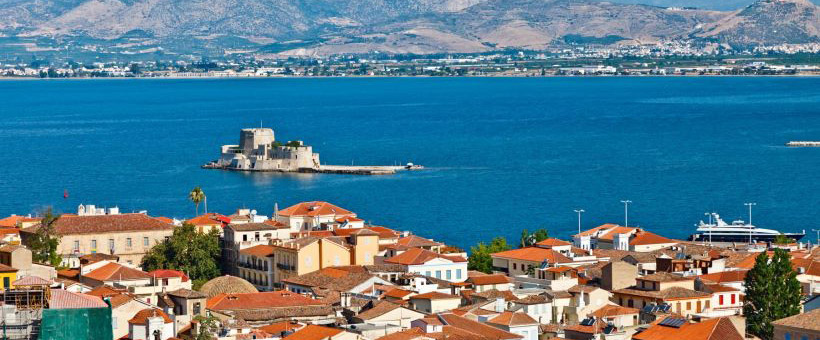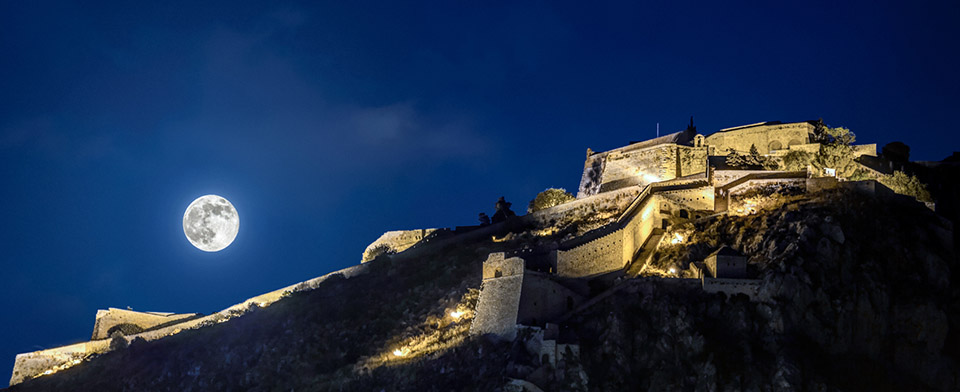Two of the most distinct characteristics of Nafplion are the fortress of Bourtzi, built on a small island, right in front of the port of Nafplion, and Palamidi, the caste above the old town.

Bourtzi
A tower complex that occupies exclusively the shape of the isle on plans of the Italian architect Gambello, Bourtzi which in Turkish-Arabian means fortress island, was built in 1473 by the Venetians, who planning to face the pirate raids, exploited the geographical position of the isle and constructed a tower with flamethrowers. The fortifying works were conducted during the Second Venetian rule of the city by Morozinis (1686) but also later by the Turks, who surrounded it with the so-called porporela that is an underwater dam of stones that made it impossible for big ships to come close.
Bourtzi has been renamed a lot of times through the years. The Venetians named it Castello dello Soglio (Kasteli) and they also named the port Porto Cadena (chain port) as the entrance of the cove closed with a portable chain that was tied from Bourtzi to Akronafplia and pulled every time an enemy ship was coming close to the port, cutting it in the middle.
Visitors can gain access to the fortress by boats which are permanently tied to the mole of Nafplio and run on schedule. The enchanting pictures that the view of Nafplio offers the visitors with the castle of Palamidi on the left and the fortress of Akronafplia on the right are indelible memories.

Palamidi Castle
The Castle of Palamidi is on a hill of height of 216m on the east of Acronafplia in the city of Nafplio. It was built and fortified during the second period of Venetian rule (1686-1715) according to Venetian architecture. It was named after the local hero Palamidis, Nafplios’ son. It has eight bastions the most central of which was that of Agios Andreas that due to its position was used as garrison headquarters. The rest bastions are named after the ancient Greek warriors “Miltiades”, “Leonidas”, “Epameinondas”, “Achilles”, “Fokion” and the French “Robert” in honor of a French Philhellene.
In 1715 it was conquered by the Turks, but in November 29th 1822 the castle came under the Greek rule again, with Staikos Staikopoulos as a leader. After the Greek Revolution of 1821 and until approximately 1925, in the inner building there were prisons where Th. Kolokotronis was imprisoned in 1833 on charges of high treason. In the fortress, besides Kolokotronis’ cell, there is the temple of Agios Andreas, which was built during the Venetian era and was devoted to Saint Andrew due to the liberation of Nafplio on his feast day. The carved lion of Agios Markos, an emblem of Venice, makes its presence felt among the paved paths of the fortress. It can be accessed by car but also on foot climbing up the famous 999 steps, northwest of the city of Nafplio, on the road towards Akronafplia.



